Introduction
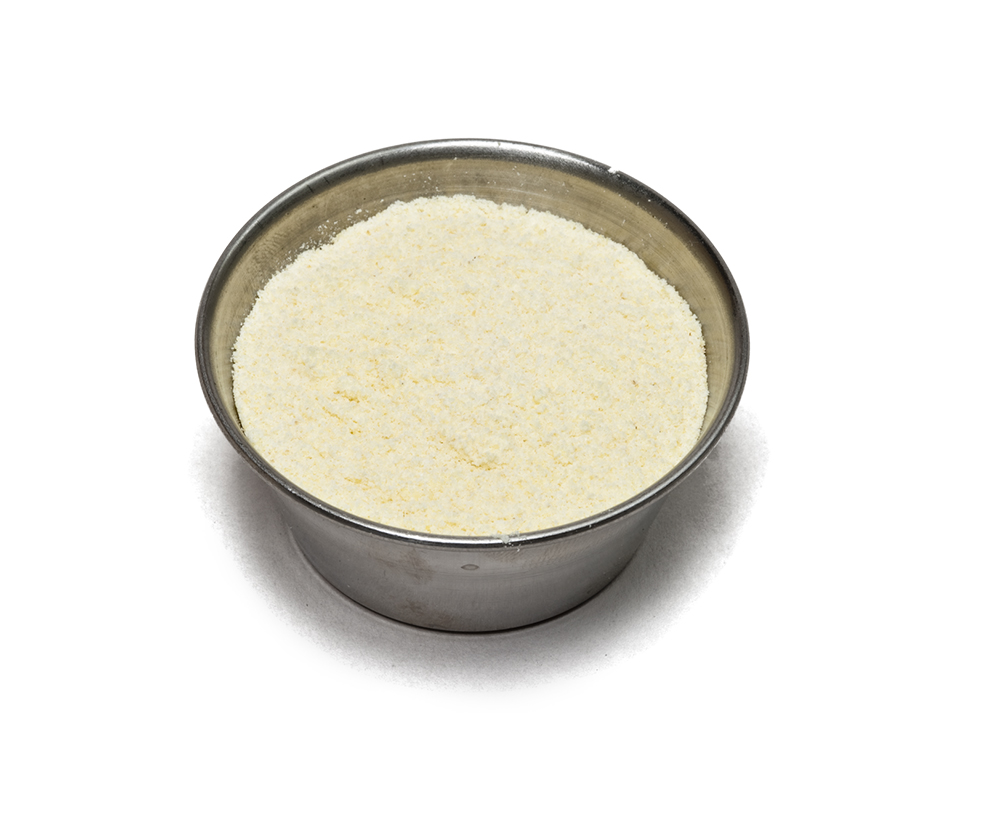
Semolina and cornmeal are two types of flour that are commonly used in cooking and baking. They both have a unique texture and flavor that can enhance a variety of dishes. Semolina is a coarse flour made from durum wheat, while cornmeal is a product of corn. Each flour has its own distinct characteristics and uses in different cuisines around the world. In this article, we will explore the origins and uses of semolina and cornmeal, compare their nutritional values, and provide some delicious recipes for you to try. Whether you are making pasta, bread, or pizza, understanding the differences between semolina and cornmeal can help you choose the right flour for your desired outcome.
An Overview Of Semolina And Cornmeal
Semolina and cornmeal are two types of flour that offer unique characteristics and flavors. Semolina is a coarse flour made from durum wheat, while cornmeal is derived from corn. Both flours can be used interchangeably in many recipes, but there are slight differences in texture and taste. Semolina has a distinct nutty flavor and a slightly coarse texture, making it ideal for pasta, bread, and desserts. On the other hand, cornmeal has a sweeter taste and a finer texture, making it perfect for cornbread, polenta, and breading for fried foods.
Different Uses Of Semolina And Cornmeal
Semolina and cornmeal are both versatile flours that can be used in a variety of dishes. Here are some different uses for each:
- Semolina: Semolina is commonly used to make pasta, bread, and desserts such as cakes and puddings. It adds a unique nutty flavor and a slightly coarse texture to these dishes. It can also be used as a coating for frying foods or as a thickener for sauces and soups.
- Cornmeal: Cornmeal is often used to make cornbread, polenta, and tortillas. It is also used as a breading for fried foods like fried chicken or fish. Cornmeal gives these dishes a slightly sweet taste and a finer texture. It can also be used as a thickener for stews or as a base for pizza crust.
Overall, both semolina and cornmeal offer distinct flavors and textures that can enhance a variety of recipes.
Semolina
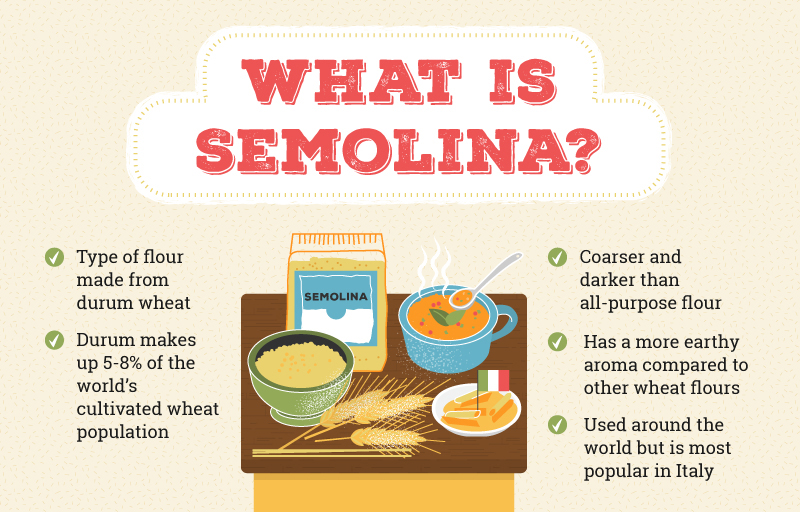
Semolina, a type of flour, is derived from durum wheat. It is known for its golden color and coarse texture. Originating from Mediterranean and Middle Eastern cuisines, semolina is widely used in various dishes. It is commonly used to make pasta, bread, and desserts such as cakes and puddings. The nutty flavor and slightly coarse texture of semolina add a unique element to these dishes. Semolina can also be used as a coating for frying foods or as a thickener for sauces and soups. Its versatility and distinct characteristics make semolina a popular choice in the culinary world.
What Is Semolina And Its Origin?
Semolina is a type of flour that is derived from durum wheat, a hard variety of wheat. It has a coarse texture and a golden color, giving it a distinct appearance. Semolina has its origins in Mediterranean and Middle Eastern cuisines, where it has been used for centuries in various dishes. Its use in pasta-making is especially noteworthy, as it provides the pasta with a unique texture and flavor. Semolina has since gained popularity worldwide and is now incorporated into a wide range of recipes, including breads, cakes, and desserts.
Uses Of Semolina In Various Cuisines
Semolina is widely used in various cuisines around the world. In Mediterranean cuisine, it is a staple ingredient in making pasta, giving it a unique texture and flavor. In Middle Eastern cuisine, semolina is used to make dishes like halva, a sweet dessert, and couscous. In Indian cuisine, semolina is used to make dishes like upma, a savory breakfast dish, and suji ka halwa, a sweet dessert. Semolina is also commonly used in baking to make bread, cakes, and pastries, adding a rich and nutty flavor to the finished products.
Cornmeal
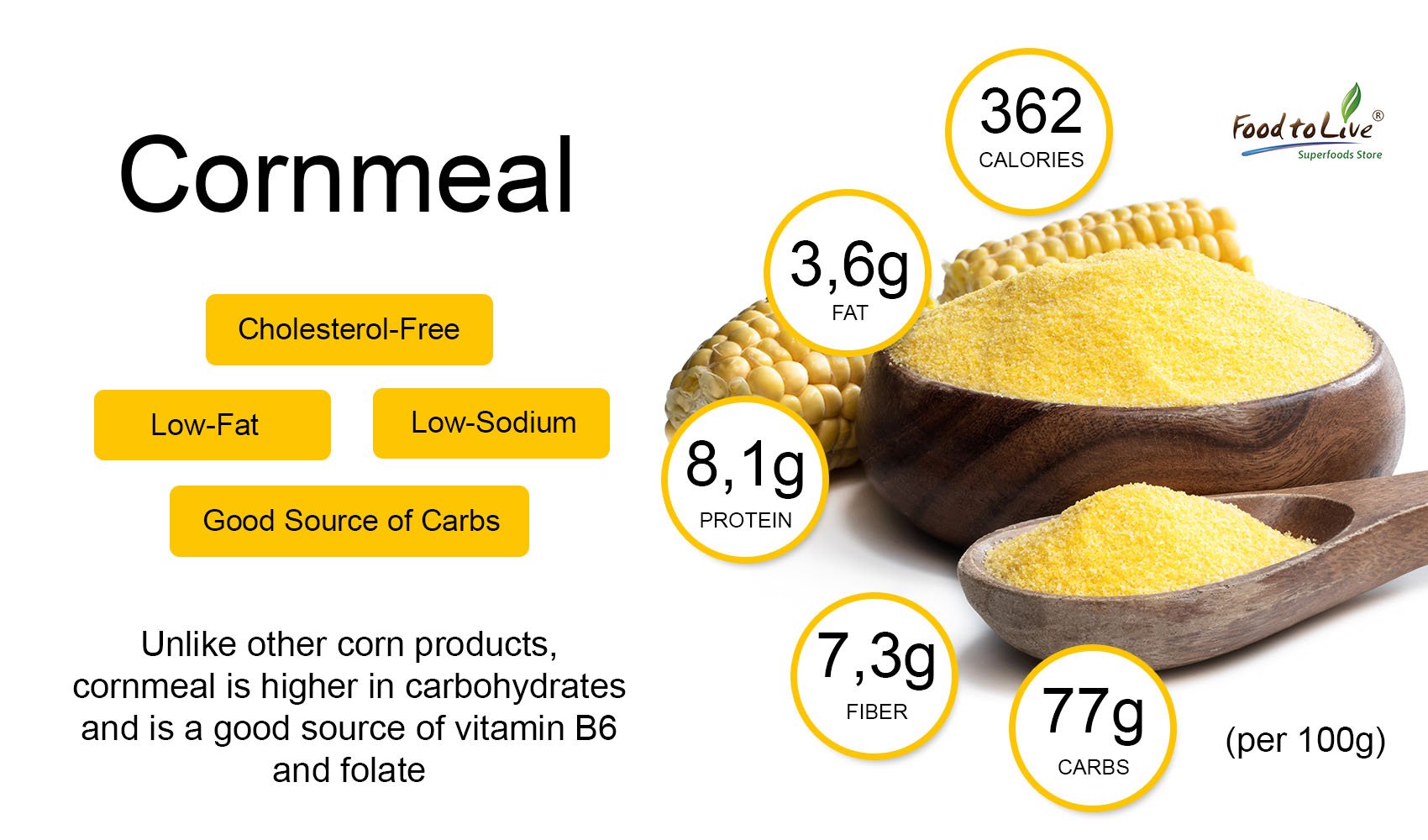
Cornmeal is a type of flour made from ground dried corn kernels. It has a coarse texture and a slightly sweet taste, reminiscent of cornstarch. Cornmeal is a versatile ingredient that is used in various traditional dishes around the world. It is commonly used to make cornbread, corn muffins, and cornmeal pancakes. It can also be used as a coating for fried foods or as a thickener for soups and stews. With its unique flavor and texture, cornmeal adds a distinct touch to baked goods and savory dishes alike.
What Is Cornmeal And How Is It Made?
Cornmeal is a type of flour that is made from ground dried corn kernels. The process of making cornmeal involves grinding the corn kernels into a coarse texture. The corn is first cleaned and then soaked in water to soften the kernels. Afterward, the corn is dried and then ground into a fine powder, resulting in cornmeal. The coarseness of the cornmeal can vary depending on the desired texture. Cornmeal can be made from both yellow and white corn, each with its own distinct flavor and color.
Traditional Dishes Made With Cornmeal
Cornmeal is a staple ingredient in many traditional dishes from around the world. In the United States, cornmeal is commonly used to make cornbread, a popular Southern dish that is often enjoyed with barbecue or chili. In Italy, polenta is a classic dish made from cooked cornmeal, often served as a creamy side dish or topped with ragu or cheese. In Latin America, cornmeal is used to make arepas, a type of corn cake that can be filled with various ingredients such as cheese, beans, or meat. These traditional dishes highlight the versatility and deliciousness of cornmeal in different cuisines.
Nutritional Comparison

When it comes to the nutritional aspect, there are some differences between semolina and cornmeal. While both are grains and provide some essential nutrients, their composition varies.
Semolina is rich in protein, vitamins, and minerals. It is a good source of iron, magnesium, and vitamin B3. It is also low in fat and cholesterol. On the other hand, cornmeal is lower in protein and contains less iron and B vitamins compared to semolina. However, cornmeal is higher in fiber, which is beneficial for digestion.
Overall, the choice between semolina and cornmeal should be based on personal dietary needs and preferences. It is important to consider the nutritional content and choose the option that aligns with your health goals.
A Comparison Of The Nutritional Value Of Semolina And Cornmeal
When comparing the nutritional value of semolina and cornmeal, there are some distinct differences. Semolina is known for its high protein content, vitamins, and minerals. It is a good source of iron, magnesium, and vitamin B3. Additionally, semolina is low in fat and cholesterol. On the other hand, cornmeal is lower in protein and contains less iron and B vitamins compared to semolina. However, cornmeal is higher in fiber, which is beneficial for digestion. Both flours have their nutritional benefits, so choosing between them depends on individual dietary needs and preferences.
Health Benefits And Considerations
Semolina and cornmeal have their own set of health benefits and considerations.
The high protein content in semolina makes it a great choice for those looking to increase their protein intake. It also contains important vitamins and minerals like iron and magnesium, which are essential for energy production and overall health.
Cornmeal, on the other hand, is higher in fiber, which aids in digestion and promotes a healthy gut. It can also provide a steady release of energy and help regulate blood sugar levels.
However, it is important to note that both semolina and cornmeal are high in carbohydrates, so moderation is key, especially for those watching their carb intake.
Cooking And Baking With Semolina And Cornmeal
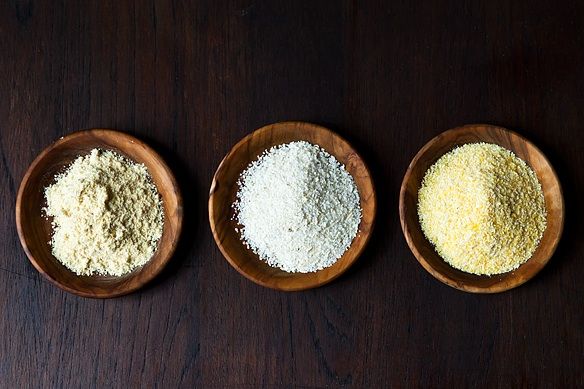
Semolina and cornmeal are not only versatile in their uses, but they also offer unique textures and flavors to dishes. When it comes to cooking and baking, both ingredients can be incorporated in a variety of recipes.
Semolina can be used to make pasta dishes, such as homemade gnocchi or tortellini. It can also be used in breads and pastries to add a slightly nutty flavor and a crunchy texture.
Cornmeal, on the other hand, is commonly used in baking cornbread, muffins, and cakes. It can also be used as a coating for fried foods, adding a crispiness to the outer layer.
When experimenting with these two flours, it’s important to consider their different textures and flavors to achieve the desired result in your recipes.
Recipes And Dishes Using Semolina
Semolina is a versatile ingredient that can be used in various recipes to add a unique texture and flavor. Here are some popular dishes and recipes that incorporate semolina:
- Pasta: Semolina flour is commonly used to make homemade pasta, such as spaghetti, fettuccine, and lasagna noodles. The coarse texture of semolina gives the pasta a satisfying bite.
- Pastries: Semolina can be added to bread and pastry doughs to provide a delicate crunch and nutty flavor. It is often used in recipes like semolina bread, scones, and biscuits.
- Pudding: Semolina pudding, also known as semolina halva, is a sweet dessert made by cooking semolina with milk or cream, sugar, and flavorings like vanilla or cardamom.
- Semolina porridge: A warm and comforting breakfast option, semolina porridge is made by cooking semolina with milk or water, sweetening it with sugar or honey, and adding spices like cinnamon or nutmeg.
- Semolina cake: A popular dessert in Mediterranean and Middle Eastern cuisines, semolina cake is moist and flavorful. It can be flavored with ingredients like lemon, orange, rosewater, or almond.
By incorporating semolina into these recipes, you can elevate the texture and flavor of your dishes.
Recipes And Dishes Using Cornmeal
Cornmeal is a versatile ingredient that can be used in various recipes to add a unique texture and flavor. Here are some popular dishes and recipes that incorporate cornmeal:
- Cornbread: Cornmeal is the essential ingredient in traditional cornbread recipes. It adds a slightly sweet and nutty flavor to the bread, making it a perfect accompaniment to soups and stews.
- Cornmeal pancakes: These fluffy pancakes are made with a combination of cornmeal and flour. They have a slightly crunchy texture and a hint of corn flavor, making them a delicious breakfast option.
- Fried foods: Cornmeal is often used as a coating for fried foods like fried chicken, onion rings, and fried fish. It creates a crispy crust that adds a delightful crunch to the dish.
- Polenta: Polenta is a traditional Italian dish made from cornmeal. It can be cooked to a creamy or firm consistency and served as a side dish or as a base for sautéed vegetables, stews, or meats.
By incorporating cornmeal into these recipes, you can add a unique flavor and texture to your dishes.
Conclusion
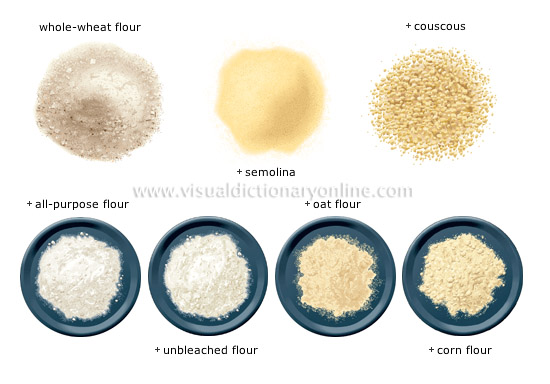
In conclusion, understanding the differences between semolina and cornmeal can greatly enhance your culinary skills. Semolina, with its coarse texture and nutty flavor, is ideal for making pasta and breads. On the other hand, cornmeal adds a unique sweetness and crunch to dishes like cornbread, pancakes, and fried foods. While both flours have their own distinct uses, they can also be used interchangeably in some recipes. Experimenting with these versatile ingredients will allow you to create a variety of delicious dishes with different textures and flavors. So, go ahead and explore the world of semolina and cornmeal in your cooking adventures.
Summary Of The Differences Between Semolina And Cornmeal
Semolina and cornmeal are two types of flour that have distinct differences. Semolina is made from durum wheat while cornmeal is made from dried corn kernels. Semolina has a coarse texture and a nutty flavor, making it ideal for pasta and breads. On the other hand, cornmeal adds a unique sweetness and crunch to dishes like cornbread and pancakes. Nutritionally, they both contain gluten and dietary fiber but differ in their mineral content. When it comes to cooking, semolina is great for thickening sauces and making creamy desserts, while cornmeal is perfect for breading and frying. Overall, understanding the differences between semolina and cornmeal allows for versatile and delicious culinary creations.
Choosing The Right Type Of Flour For Specific Dishes
Choosing the right type of flour for specific dishes can greatly enhance the taste and texture of your culinary creations. When it comes to pasta and breads, semolina flour is the preferred choice because of its coarse texture and nutty flavor. On the other hand, if you’re making cornbread or pancakes, cornmeal flour is the perfect option as it adds a unique sweetness and crunch. It’s important to consider the specific qualities and characteristics of each flour to make the best choice for your desired outcome. Experimenting with different types of flour can lead to exciting and delicious results in the kitchen.
FAQ: Semolina vs Cornmeal
Q: What is semolina?
A: Semolina is a coarse flour that is made from durum wheat. It is commonly used in pasta making, bread making, and as a coating for certain fried foods.
Q: What is cornmeal?
A: Cornmeal is a type of flour that is made from ground dried corn. It is used in a variety of recipes, including cornbread, tortillas, and coating for fried foods.
Q: What are the differences between semolina and cornmeal?
A: There are several differences between semolina and cornmeal. The main difference lies in the grains they are made from. Semolina is made from durum wheat, while cornmeal is made from corn. The texture and taste also differ; semolina has a coarser texture and a nutty flavor, whereas cornmeal is finer and has a sweet, earthy taste.
Q: Can they be used interchangeably in recipes?
A: Semolina and cornmeal are not typically used interchangeably in recipes due to their distinct differences in flavor, texture, and composition. However, in some cases, they can be substituted for each other in certain recipes with adjustments. It’s always best to consult a recipe or a professional chef for guidance.
Q: Which one is better for making pasta?
A: Semolina is the preferred choice for making pasta due to its higher protein content and coarser texture. It provides pasta with a desirable texture and helps it retain its shape during cooking.
Q: Can both semolina and cornmeal be used as coatings for fried foods?
A: Yes, both semolina and cornmeal can be used as coatings for fried foods. Semolina will provide a slightly different texture and flavor profile than cornmeal. Semolina tends to yield a crispier coating, while cornmeal provides a slightly softer and sweeter coating.
Q: Are there any nutritional differences between semolina and cornmeal?
A: Yes, there are some nutritional differences between semolina and cornmeal. Semolina is higher in protein and gluten, making it a good source of energy and providing a feeling of satiety. Cornmeal is lower in protein and higher in fiber, vitamins, and minerals, including folate and potassium.
Q: Are semolina and cornmeal gluten-free?
A: No, semolina is not gluten-free as it is derived from durum wheat, which contains gluten. However, cornmeal is naturally gluten-free as long as it is not cross-contaminated with gluten-containing grains during processing. It’s important to check labels and ensure certified gluten-free status if you have a gluten intolerance or allergy.
Q: Can semolina and cornmeal be stored long-term?
A: Semolina and cornmeal can be stored long-term if kept in a cool, dry place in airtight containers. While both have a long shelf life, it’s always best to check the expiration dates on the packaging.
In conclusion, semolina and cornmeal are distinct in terms of their origin, taste, texture, and usage in various recipes. While they can’t always be used interchangeably, both semolina and cornmeal have their own unique qualities that make them valuable ingredients in the culinary world.

From At-Home Dinner Parties to Family Reunions to Office Parties, we can cater your next Event!